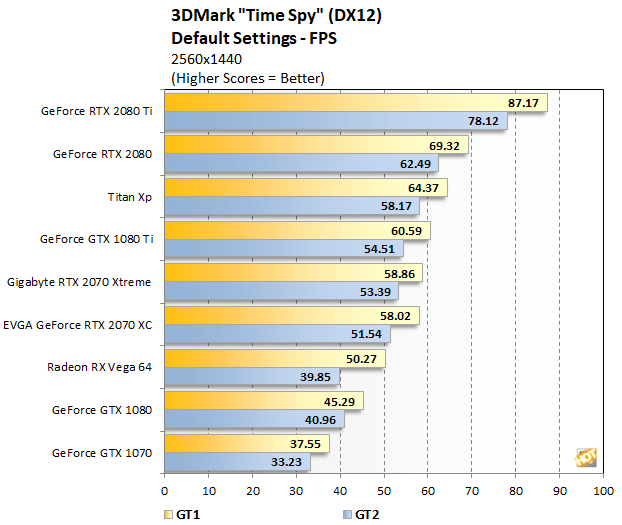Gigabyte Aorus GeForce RTX 2070 Xtreme Review: Overclocked, Custom Outputs
3DMark Time Spy is a synthetic DirectX benchmark test from Futuremark. It features a DirectX 12 engine built from the ground up to support bleeding-edge features like asynchronous compute, explicit multi-adapter, and multithreading. Time Spy is designed to test the DirectX 12 performance of the latest graphics cards using a variety of techniques and varied visual sequences. This benchmark was developed with input from AMD, Intel, Microsoft, NVIDIA, and the other members of the Futuremark Benchmark Development Program, to showcase the performance and visual potential of graphics cards and other system resources driven by close-to-the-metal, low-overhead APIs.
|

3DMark Time Spy


|
|
|
The older, DirectX 11 Fire Strike tests has the Gigabyte Aorus GeForce RTX 2070 Xtreme Review once again outpacing the EVGA card, but here the 1080 Ti is able to overtake the RTX 2080 and moves one notch up the stack.










